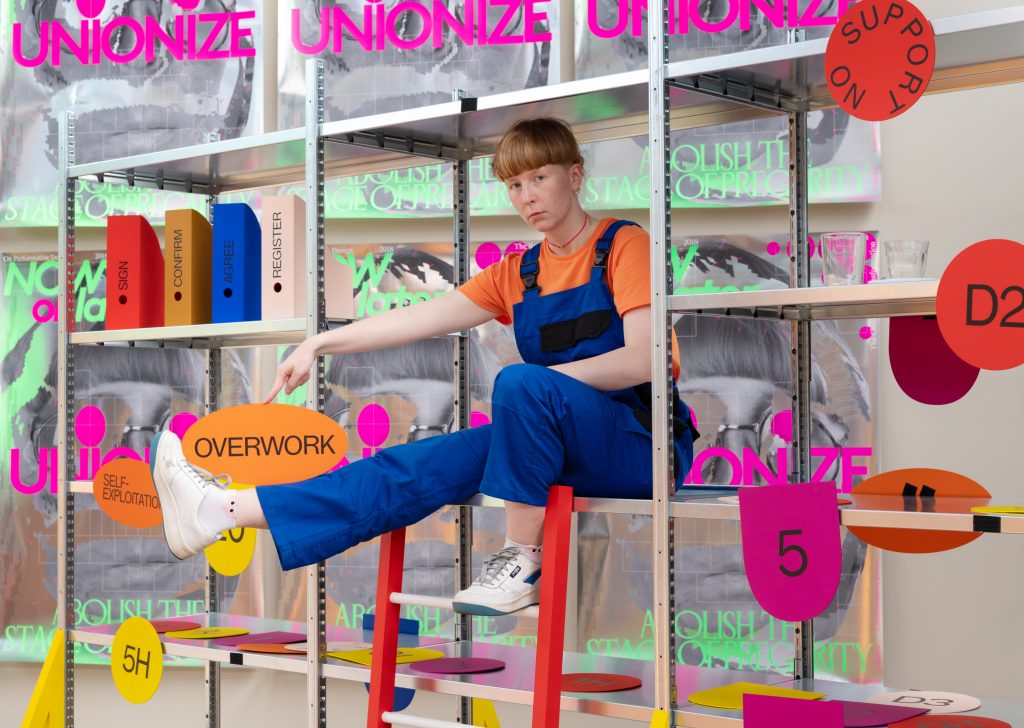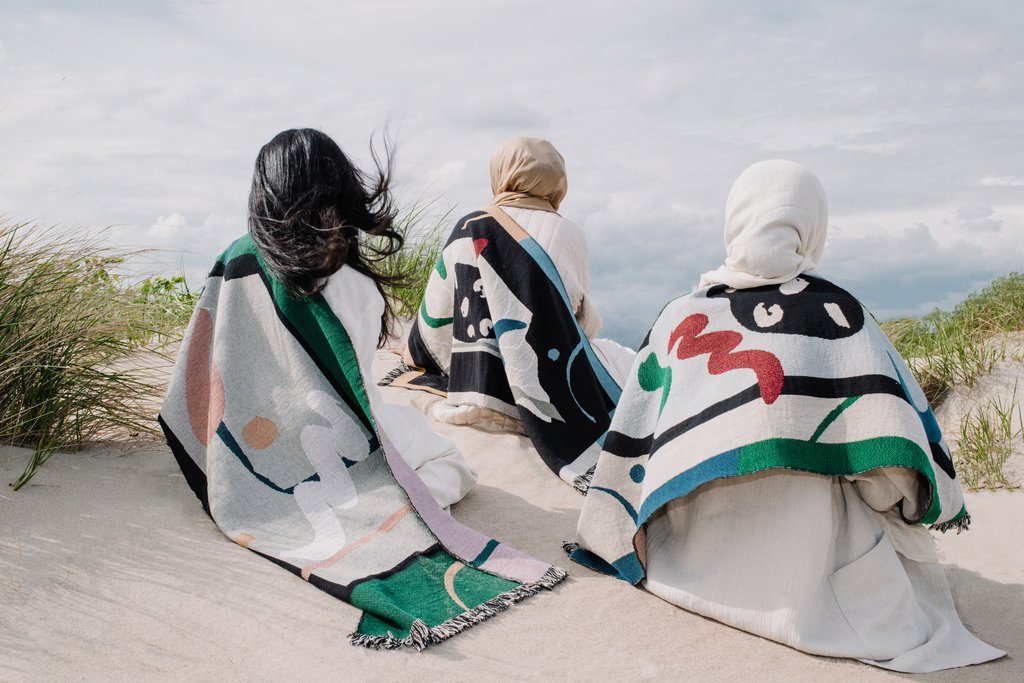Interview: Tereza Ruller of The Rodina
We discuss boundlessness and experimentation in graphic design ahead of the fourth annual Us By Night

Comprised of Tereza and Vit Ruller, The Rodina operates as a design studio but produces art and experiential work that defies expectation. By employing techniques used in performance art, and surrounding themes of play and subversion, their work explores the virtual and physical worlds. Inventive, oftentimes odd and always inspiring, The Rodina challenges and encourages audiences. As such, they’re the ideal speakers for the fourth annual Us by Night conference (26-28 September) in Antwerp—a nocturnal affair comprised of keynotes and a night market aimed at uniting an international creative community.
Ahead of the festival, we were fortunate enough to speak with Tereza of The Rodina about their work, the conference, technology and its influence, and everything that goes into producing work for mass audiences.

How has your creative practice evolved into the focus on performative design that you’re dedicated to today?
We were always curious about what graphic design can do and could be. To discover things and concepts, we simply played around. At the same time, opening and unwrapping design processes became important. Next to that, there was always this critical question in the air: what gives value to our work, if it’s not the beauty of the surface? Answering these questions led to investigation of performative aspects of design. We were diving into many inspiration sources—from old suprematist stage-design from the 1920s to performance art of the 1960s, graphic design experiments of 1990s, and contemporary critical art theory talking about labor.
The most important moment was when we realized it is possible to incorporate a designer’s body inside the design outcomes. It happened when filming the music video for “Budget Cuts.” For the first time, we used the body as a part of the toolset. Same as using the brush or sponge in Photoshop. The designer’s body became an active part of the design process and outcome. And into that direction we shaped The Rodina.

Were mediums always merged for you or was there a moment when design, video, space and performance all suddenly made sense to cohabitate?
I’m more interested in dynamic movement, event or situation in graphic design. Perhaps because I’m a Millennial, of the computer generation, so using such machines from early childhood makes me see things more connected and intertwined into each other by various media. I also like to think in different temporalities, be it working with ephemeral outcomes that last only a few days or focusing on experience and participation. This spans from animated posters to interactive websites and situations where the public actively joins the design.

How has technology influenced your work? Does it enable visions that you have or does it inspire new directions you might not have thought of?
Our role is changing as the technologies are more affordable and more quickly developing. We see our work as one intermedium or a project that circulates in various forms—morphing, flexible and fluid across platforms and softwares. We are excited to see how new technology is able to connect—for example, graphic design and game development and coding together.
Hardware and software are becoming stronger, more reliable, affordable and faster than ever before. And their combination brings exciting results. The real question for me is about what are the new working conditions it brings, do we do better (work less hours) when we have things more automated or do we actually work more than ever? Who monetizes on these technologies? What are the living conditions of all the employees of these companies? And are these companies also connected with selling users data, the extraction of scarce resources (mining, deforestation), or with developing military software used for warfare softly labeled as “the defense?”

You refer to your work as design more than art. Why?
Having a debate with my client is key in my work. By talking, I’m designing not for the client but with her. The sense of collaboration and commonness is very important. Such debates can happen in different context, even though there are lots of cultural clients around. I consider the discourse part of the design dialogue rather than art.

Can you share a little bit about what you plan to present at Us By Night?
I’m bringing a few limited collectable self-published sets of cards with inspiring terms and research on Performative Design. I will give them to the audience. They will help me to introduce Performative Design and then the plan is to present a few selected projects to demonstrate my ideas. The intention is to invite the audience to think about possibilities in their own practice. Because it can bring more playfulness as well as the critical counter-voice and a way to activate positive change through and beyond the graphic design.
To be in the audience for The Rodina’s presentation at Us By Night, simply purchase tickets online. Entry to the dynamic festival grants access to plenty of panels and an evening-long night market. We’re excited to partner with Us by Night to help spotlight the 70+ artists in attendance and celebrate the creatives in attendance. COOL HUNTING is a media partner of Us By Night.
Images courtesy of The Rodina












